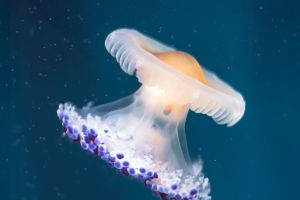Hello Lykkers! The walrus, an iconic marine mammal, has long captured the imagination of those lucky enough to witness it in the wild. Known for their distinctive tusks, massive size, and playful behavior, walruses are not only fascinating creatures but also play an important role in their ecosystem.
These majestic marine giants, found in the icy waters of the Arctic, deserve a closer look. Here are some intriguing facts about walruses that might surprise you!
1. Size and Strength: Giants of the Ocean
Walruses are immense animals, with males weighing between 2,000 to 3,700 pounds, while females are slightly smaller. The average grown-up male can reach lengths of up to 12 feet! Their sheer size is intimidating, but it’s what helps them dominate the frigid Arctic waters where they live. Despite their bulk, walruses are surprisingly agile swimmers. Their powerful forelimbs allow them to glide through the water with ease, propelling them to speeds of up to 22 miles per hour.
2. The Role of Tusks: More Than Just a Signature
While their long, ivory tusks are undoubtedly their most recognizable feature, these tusks serve important functions beyond aesthetics. Walruses use their tusks to haul themselves out of the water and onto ice floes or beaches. They often rely on these tusks for social interactions, too—males sometimes engage in tusk duels to establish dominance. Additionally, these tusks can be vital in foraging. Walruses have sensitive whiskers, or vibrissae, on their faces, which help them detect prey along the ocean floor.
3. A Social Lifestyle: Living in Large Groups
Unlike many other species, walruses are highly social creatures. They live in large groups, known as herds or "haul-outs," often consisting of hundreds or even thousands of individuals. These massive groups can be found on Arctic beaches or ice floes, where walruses gather for rest and social interaction.
The social dynamics within these groups can be complex, with established hierarchies based on age and size. Males often compete for dominance, but cooperation is essential for survival, especially during the harsh Arctic winters.
4. What’s on the Menu? A Diet of Delicacies
Walruses are carnivorous, with a diet primarily consisting of benthic invertebrates like clams, snails, and various other mollusks. They dive to the ocean floor to forage for food, using their sensitive whiskers to detect prey in the dark, cold waters. Interestingly, walruses can consume huge quantities of food—up to 6,000 clams in a single feeding session. Their digestive systems are specially adapted to process this high-calorie diet, helping them maintain their massive size in a cold environment.
5. Breathing in the Cold: Adaptations for Survival
Living in freezing Arctic waters requires some impressive adaptations, especially when it comes to breathing. Walruses can hold their breath for up to 30 minutes while diving, a critical ability for finding food and escaping predators. However, it's not just their diving skills that help them survive in cold waters. Walruses also have a thick layer of blubber beneath their skin that keeps them insulated from the freezing temperatures. This blubber is also an energy reserve that sustains them when food is scarce.
6. Threats to the Walrus Population: A Warming World
While walruses have evolved to survive in one of the harshest environments on Earth, climate change is threatening their habitats. As Arctic sea ice continues to shrink, walruses face challenges finding stable resting areas. Without ice floes to haul out on, these marine giants are forced to come ashore, which increases the risks of stampedes and predation. Additionally, the melting ice has made it more difficult for walruses to reach feeding grounds, impacting their ability to find food.
7. Conservation Efforts: Protecting the Walrus
Organizations around the world are working to protect walrus populations and their habitats. Conservationists focus on studying walrus behavior, migration patterns, and health to ensure their long-term survival. Efforts to combat climate change, particularly the reduction of greenhouse gas emissions, are essential to preserving the Arctic environment and the species that depend on it. Additionally, laws protecting walruses from overhunting and harassment are helping to stabilize their populations.
8. Walrus Communication: A Symphony Underwater
Did you know walruses communicate through a range of sounds? From bell-like barks to growls, roars, and even whistles, walruses use vocalizations to communicate with one another in the water and on land. Their communication is crucial for maintaining social bonds within their groups, especially in large haul-outs where individuals may be spread out. Some scientists have even speculated that walruses might use their vocalizations to navigate in the dark depths of the Arctic waters.
Walruses are more than just giant, tusked creatures of the Arctic—they are complex, social animals with fascinating behaviors and adaptations that make them perfectly suited for life in one of Earth’s most extreme environments. As we continue to face the challenges of climate change, understanding and protecting these majestic marine giants becomes even more crucial.
Let’s celebrate these unique creatures, not just for their size and strength, but for their incredible role in maintaining the delicate balance of Arctic ecosystems!
10 Atlantic Walrus Facts
Video by OceanwideExpeditions


